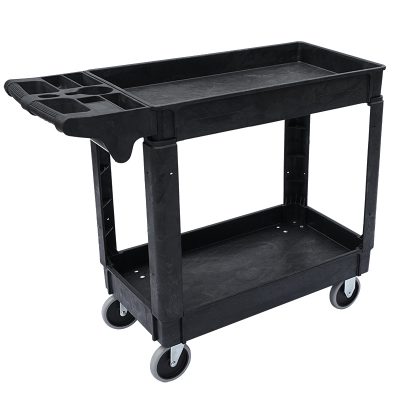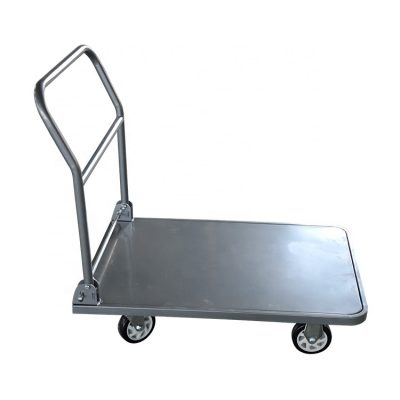Navigating workspaces with industrial trolleys requires careful planning, organization, and adherence to safety guidelines to ensure efficient and smooth movement while minimizing the risk of accidents. Here’s a step-by-step guide on how to navigate workspaces effectively using industrial trolleys:
- Workspace Analysis:
- Assess the layout of your workspace, including doorways, aisles, and corridors. Identify potential obstacles, narrow areas, or tight corners that may hinder trolley movement.
- Determine high-traffic zones and areas where trolley movement is essential.
- Pathway Design:
- Designate clear pathways for trolley movement. Ensure that pathways are wide enough to accommodate the trolley size and allow comfortable passage for operators.
- Use floor markings or visual cues to indicate designated paths for trolley movement.
- Zoning and Categorization:
- Divide your workspace into zones based on the type of work or materials being transported. Assign specific trolleys to each zone, if possible.
- Implement color coding or labeling for trolleys and zones to aid operators in quickly identifying where each trolley belongs.
- Storage and Loading Stations:
- Set up dedicated loading and unloading stations for trolleys. These stations should be strategically placed to minimize the distance materials need to be moved.
- Equip loading stations with necessary tools and equipment to ensure efficient loading and unloading.
- Trolley Maintenance:
- Regularly inspect trolleys for any damage or wear and tear. Replace damaged wheels, handles, or parts promptly to prevent accidents.
- Lubricate moving parts to ensure smooth movement.
- Operator Training:
- Provide comprehensive training to trolley operators on proper handling, pushing, and pulling techniques.
- Emphasize the importance of maintaining clear visibility and situational awareness while operating trolleys.
- Safety Measures:
- Install safety features such as brakes, anti-tip mechanisms, and reflective markings on trolleys to enhance safety.
- Clearly mark pedestrian crossings and intersections to alert both trolley operators and pedestrians.
- Traffic Management:
- Implement traffic management strategies, especially in areas with heavy trolley traffic. Use signage and signals to indicate right of way and safe crossing points.
- Establish communication protocols for operators to signal their presence to others, especially at blind corners or intersections.
- Obstacle Management:
- Address potential obstacles or congestion points by rearranging equipment or furniture. Ensure that pathways are free from obstacles that could obstruct trolley movement.
- Continuous Improvement:
- Regularly review and optimize the pathway design and layout based on feedback from trolley operators.
- Monitor trolley movement patterns and adjust pathways as needed to accommodate changing workflow requirements.
- Technology Integration:
- Consider using technology solutions like sensors or automated guiding systems for trolleys in larger facilities to enhance navigation and reduce the likelihood of collisions.
- Emergency Procedures:
- Establish clear emergency procedures for situations such as trolley breakdowns, accidents, or sudden obstacles in pathways.
- Train operators on how to respond to emergencies and how to safely evacuate areas if necessary.
Remember that the key to successful trolley navigation is a combination of thoughtful planning, ongoing communication among teams, operator training, and a commitment to maintaining a safe and efficient workspace. Regularly assess your trolley navigation strategy and make adjustments to ensure optimal efficiency and safety.



















